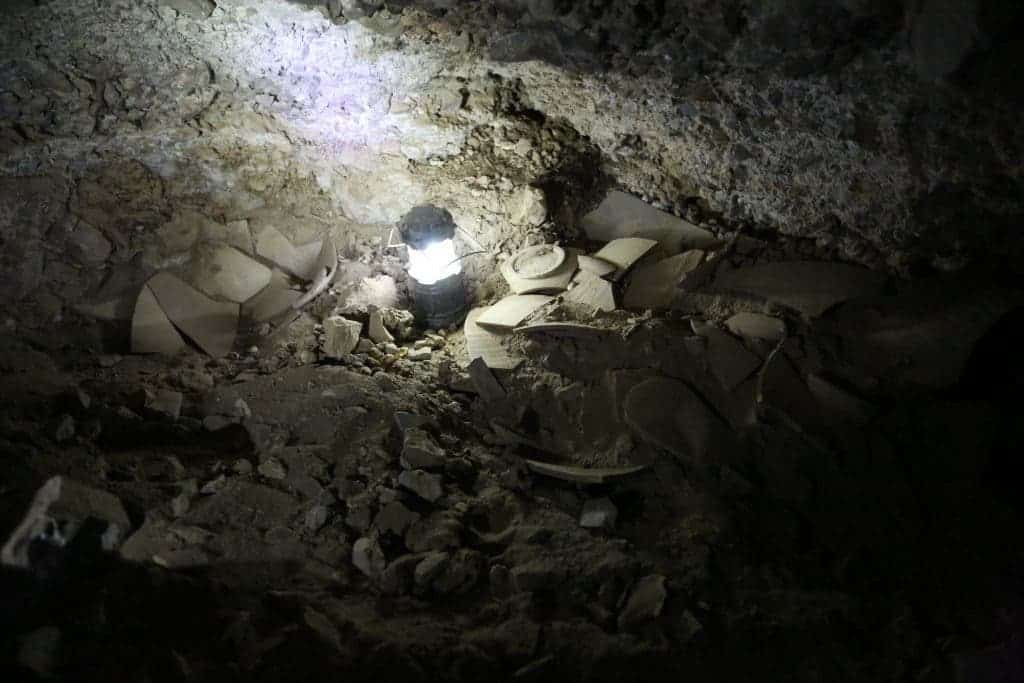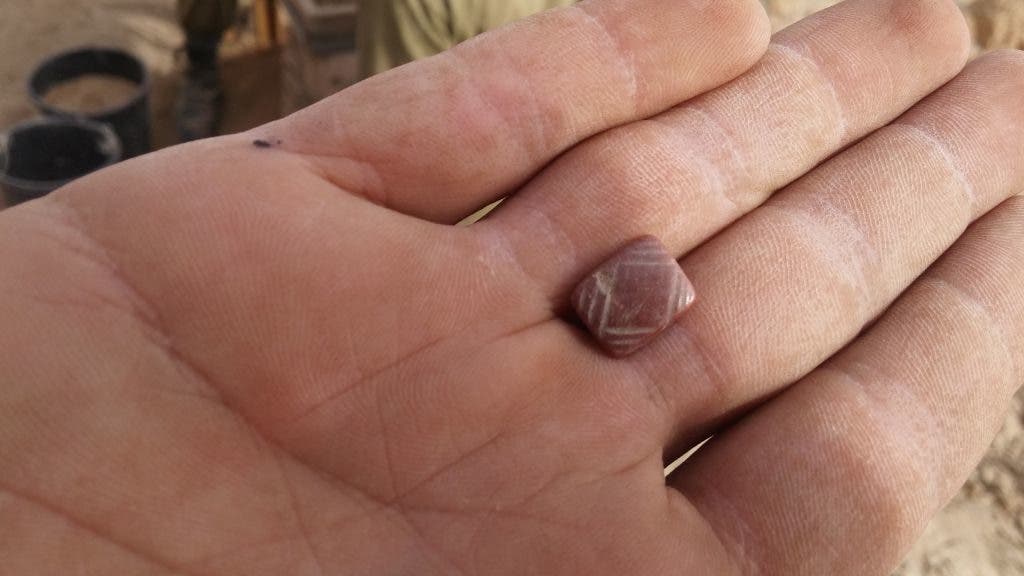
Remnant of scroll found in the new cave near Qumran after it was removed from its jar. The scroll was devoid of text, however. Credit: Casey L. Olson and Oren Gutfeld, Hebrew University.
In the 1940s, archaeologists aided by Beduin explorers discovered a cave in the Judean Desert packed with jars containing parchments which would become known as the Dead Scrolls. By 1956, eleven caves containing similar jar were found. These texts, more than a 1,000 by now, are dated between the 1st century BC and the year 70 AD. Most are etched with ancient religious texts like the Hebrew Bible and the earliest known version of the Ten Commandments. Now, after a long wait, Israeli and U.S. archaeologists claim they’ve identified a 12th Dead Scroll cave.
“It is the first time 60 years we have the first evidence of a new scroll cave,” Oren Gutfeld, a researcher at Hebrew University of Jerusalem’s Institute of Archaeology, told the Washington Post. “We knew about 11 caves, and now we have 12.”

A beautiful manuscript from the Dead Sea Scrolls collection on display at the Israel Museum in Jerusalem. It’s almost 2,000 years old. Credit: Miriam Alster/Flash90.
The cave, northwest of the Dead Sea near the region of Qumran, was first surveyed in the early 1990s but its importance came to light only recently after more thorough excavations. Unfortunately, no Dead Scrolls could be found inside because Beduin looters beat the archaeologists to it decades ago after they learned Qumran artifacts could be sold for exorbitant fees on the black market. The looters’ trespassing is undeniable, evidenced by a pair of pickaxes left behind close to a broken jar.

Fragments of shattered jars believed to have contained stolen Dead Sea scrolls, found in cave 12 near Qumran. Credit: Casey L. Olson and Oren Gutfeld, Hebrew University.
Luckily, the looters took only the parchments — we might never know where they ended up or if these still exist — but didn’t bother to take with them all the other ‘worthless’ stuff that proves this is a genuine Dead Scroll cave. Some of the evidence includes a small scrap of parchment in a jar and a collection of at least seven storage jugs identical to those found in the other Qumran caves.
Initially, the small parchment got everyone excited but after a few days during which the archaeologists carefully unrolled the delicate fabric they found it was empty. It’s still an amazing find, though, offering a glimpse into the scribbling process of Second Temple Period Hebrew scholars. “No doubt we have a new scroll cave,” Gutfield told The Times of Israel.
Moreover, the scientists also found “ancient arrowheads, flint knives and a seal made from a carved semiprecious stone called carnelian,” Ben Guarino reported for the Washington Post. These predate the Second Temple Period by up to 8,000 years proving Qumran caves were occupied by humans as early as 10,000 BC.

Seal made of carnelian found in the cave. Credit: Casey L. Olson and Oren Gutfeld, Hebrew University.
The researchers announced they will soon start a massive expedition whose goal is to survey all the caves in the Judean Desert in a bid to find more Dead Scroll caves. There are as many 300 possible sites where they could strike a new find.









